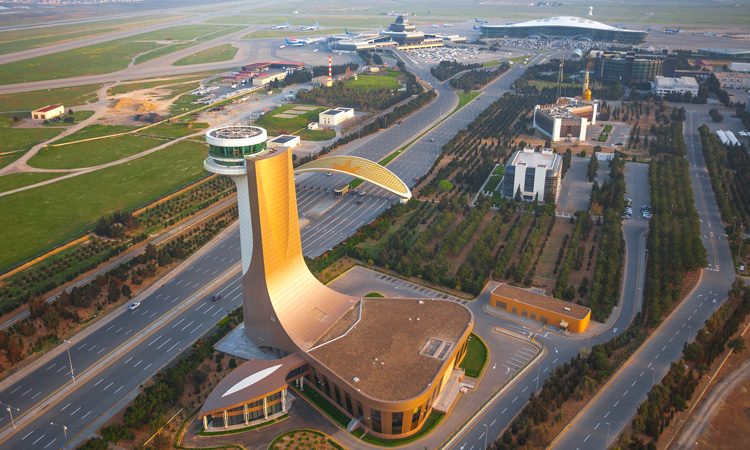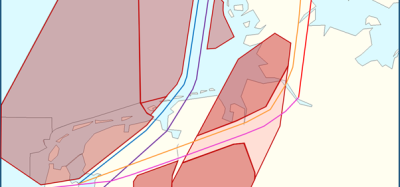AZANS: Delivering airspace safety through efficiency
- Like
- Digg
- Del
- Tumblr
- VKontakte
- Buffer
- Love This
- Odnoklassniki
- Meneame
- Blogger
- Amazon
- Yahoo Mail
- Gmail
- AOL
- Newsvine
- HackerNews
- Evernote
- MySpace
- Mail.ru
- Viadeo
- Line
- Comments
- Yummly
- SMS
- Viber
- Telegram
- Subscribe
- Skype
- Facebook Messenger
- Kakao
- LiveJournal
- Yammer
- Edgar
- Fintel
- Mix
- Instapaper
- Copy Link
Posted: 25 June 2019 | Baku Airport | No comments yet
Azerbaijan Air Navigation Services details the challenges of traffic growth in regard to managing Azerbaijani airspace, and highlights how this has been tackled.


In the first decade of the 21st century, Azerbaijan witnessed an increase in interest from both international businesses and international tourists’, leading to a significant rise in passenger traffic to Heydar Aliyev International Airport, which is considered one of the best airports in the CIS countries.
At the same time, hosting global sporting events such as the First European Games, the Formula 1 Azerbaijan Grand Prix and the UEFA Europa League final has become a challenge for the structures responsible for the provision of flights, safety and airspace usage efficiency.
Considering the strategic position of the Azerbaijan Republic at a cross point between Europe and Asia, the development of civil aviation in Azerbaijan, and the rapid growth of the national fleet thanks to the country’s economic growth, sharp growth in internal, transit and overflight air traffic is expected in Azerbaijan in the coming years. Azerbaijan is expected to play a significant role in the region’s air traffic flow management.
Since 1996, Azerbaijani ANSP AZANS has been providing air traffic services within the airspace of the Azerbaijan Republic, covering 165,400 square kilometres of land and sea. The length of air corridors serviced by Azeraeronavigation Air Traffic Department (AZANS) exceeds 11,200km. Today, AZANS uses the latest ATC systems and serves more than 150,000 flights a year, more than 95,000 of which are transit flights over the territory of the Azerbaijan Republic between Europe and Asia.
The over 20-year development path traversed by Azerbaijan Air Navigation seems incredible. Current AZANS projects impress with their ambition, focusing on the most advanced solutions for air traffic management. AZANS is moving towards cutting-edge digital technologies and plans to introduce traffic services by applying artificial intelligence as well as developing the national ATM Artificial Intelligence Center. The centre will be a concentration of all modern achievements in the field of ATM, including a UTM control centre fully integrated with ATM, a remote tower, integrated 3D-TWR and radar simulators, and digital data centres. The concept of a new UAV and flight control centres will ensure flight safety when using the UAV and has been successfully presented at the World ATM Congress 2019 in Madrid.
AZANS is also planning to become the first ANSP in the region to use modern digital technologies such as D-ATIS, D-VOLMET, DCL, and CPDLC; allowing efficient communication between the pilot and air traffic controller, transfer of meteorological data and digital transmission of air navigation information for Azerbaijan’s airspace users.
Obviously, the development would not have been so successful without the President of Azerbaijan Republic, Ilham Aliyev’s continued support to the civil aviation of Azerbaijan. Ilham Aliyev is leading the country to a successful integration of international transport structures and an implementation of the latest European safety standards.
The successful and dynamic development of air navigation in Azerbaijan has since seen us chosen as the host of the annual CANSO Global ATM Summit in 2020 in Baku. AZANS was also nominated for Jane’s ATC Award 2019 in the field of flight safety and efficiency.
An important component of a modern ANSP is close cooperation with all aviation stakeholders. As a national air navigation service provider, we understand that our common goal is to ensure safety and regularity of air traffic. Therefore, our primary objective is enhancing collaborations with national providers such as DFS, Hungarocontrol, DHMI, “Kazaeronavigatsia”, SENASA and international organisations like ICAO, IATA, CANSO, and EUROCONTROL.
The implementation of the Airspace Efficiency Strategy and Development Center (ASEC) has been the most ambitious AZANS’ project in recent years. Due to the intensive development of transport corridors, flexible routes and the air navigation infrastructure, Azerbaijani airspace has become a junction between Europe and Asia, as well as a route between Russia and the Middle East by using innovative experience and state-of-the-art technologies in the field of aeronautical data exchange proving harmonisation of air traffic flows. Consequently, the overflight traffic in Azerbaijani airspace increased by 250 per cent between 2000-2018.
At the same time, traffic in neighbouring countries like Turkey and Iran increased dramatically, up to 40-50 per cent, and EUROCONTROL expects that Turkey, for instance, will face an increase of 2.5 times in the number of flights by 2040. The Azerbaijani ANSP understands the increasing demands of airspace users due to the rapidly changing political and economic situations in Azerbaijan, and internationally. Such changes create the need for innovative solutions that keep safety a priority while reducing costs and improving the network-based and environmentally-oriented approach to ATM. AZANS has to be ready to react and respond to those rapid changes and uncertainty while being sure that they can be handled safely and efficiently.
The main philosophy in creating ASEC was to respond efficiently and smoothly to growth challenges as well as to disruption or crisis in the region – by using innovative ATFM and airspace design tools, by bringing together the right experts and decision makers and sharing information with all relevant stakeholders. AZANS put together a variety of expert skills and created a dedicated team of highly qualified and motivated professionals with relevant experience in the fields of airspace design, capacity planning, operations, safety management, research and development, and training. Close coordination with EUROCONTROL through integration into IFPS in 2016 and a connection to PENS in 2019 was also established.
ASEC in the future is a promising regional contingency coordination centre, working in close cooperation with EUROCONTROL and Asian ATFMs to plan air traffic flows in unforeseen circumstances. The timelines of such a contingency centre beyond the overloaded European and Asian airspace became more crucial after closing Pakistani airspace, resulting in the disruption of world air traffic flows.
Issue
Related topics
Air traffic control/management (ATC/ATM), Regulation and Legislation, Safety
Related airports
Related organisations
Azeraeronavigation Air Traffic Department (AZANS), CANSO (Civil Air Navigation Service Organisation), DFS Deutsche Flugsicherung (DFS), DHMI, EUROCONTROL, HungaroControl, International Air Transport Association (IATA), International Civil Aviation Organization (ICAO), SENASA, “Kazaeronavigatsia”


















